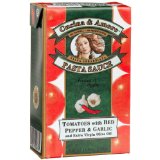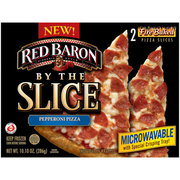The kids are out of town and I figured it would be a great opportunity to go wine tasting, something we haven’t done for a couple of years. Livermore is the wine growing region closest to us, so that’s where we headed last Saturday. Mike drove, I tested. For this trip I concentrated in smaller wineries – and in particular, those that offered free tastings. It ended up being a good strategy, I was surprise to find how good the wines from these little wineries were. Indeed, I think the whole quality of Livermore wines has gone up considerably.
We started out wine tasting at Wente Vineyards, the only large winery that offers free wine tasting. Alas, there free wine tasting includes only their 2 most popular wines: their 2009 Riva Ranch Chardonnay ($20 at Wente, but as low as $12 elsewhere) and their 2008 Charles Wetmore Cabernet Sauvignon ($25). I liked both wines, they were both very drinkable, low in acidity, well balanced and just nice. You won’t go wrong buying a bottle of either.
Wente also offers tastings of 5 wines for $5 or $10 (depending on the wines). I think it would be worth trying them. I didn’t this time because I wanted to be able to taste at other wineries as well but I will next time. Wente has a very nice tasting room, heavy on wood, with a central, circular wine tasting area and a largish shop. It was very busy.
Our next stop was Cedar Mountain Winery, a mom & pop operation with a tiny tasting room. Tastings here are $5 or $10 for 5 wines, refunded with purchase. I’d gotten a coupon for a free tasting, however (search online). I started my tasting with the 2008 Pinot Grigio ($13), which was very sharp, a bit bitter but still buttery without being oaky. It was nice and simple and I enjoyed it. It was a good wine for the price. The 2008 Estate Sauvignon Blanc ($14) was even lighter, quite summery, with a stronger after taste, I liked it as well. After that, the 2008 Duet ($22) was an unexpected burst of flavor. This is a very punchy, very earthy, front-flavored wine, definitely very rustic. I rather enjoyed it, but I’m not sure I’d buy a whole bottle of it. The 2007 Estate Cabernet Sauvignon ($25) that followed it could not compete with the Duet for flavor, and pretty much disappeared in my mouth.
We then moved on to the Ports, which I’m not too fond of, but Mike is. Their Viogner White Port ($20 for a 1/2 bottle) tasted like your typical dessert whine, it didn’t feel fortified at all and it was quite sweet, pretty much like grape syrup. We both liked it. Mike was even fonder of the Tortuga port ($25 for half bottle), which contains 70% Scharffen Berger cocoa powder. To me it tasted like port mixed with cocoa powder, but Mike really enjoyed it and actually bought a bottle. I did like their 2000 Late Bottled Vintage Port ($40), made from 3 Portuguese varietals. I found it very balanced and not very alcoholic. Mike liked it too, but not as much as the Tortuga.
Cedar Mountain only sells their wines at the winery, so if we ever want more Port we’ll have to head over there.
We then headed to Eagle Ridge Vineyards. This is a cool winery with a tasting room located in the front of a large barn. It was pretty crowded when we got there, so it’s probably best to head here early. I liked their wines all in all, but what I particularly liked was the herbed cheddar on crackers they offered. I’d like to find some more!
As to their wines, their 2010 Pinot Grigio ($20) was nice and easy to drink but overpriced. The same can be said about their 2006 Cabernet Sauvignon ($28). Definitely good wines at a lower price point. I found their 2007 Cabernet Sauvignon ($28) too shallow, though it had an interesting chocolaty essence. Mike liked it but I found it just OK. Their 2006 Zinfandel ($25) was too front-loaded for my taste, it sort of disappeared after a burst of flavor. Finally, Mike liked their port ($25) but I found it too alcoholic, and preferred the one at Cedar Mountain.
Charles R Vineyards, our next stop, had a cute, sunny tasting room and a small outside patio with chairs for those looking for a picnic spot. The small winery, they do 2,000 cases a year, has been in the family for three generations. They only sell their wines at the winery and they don’t ship. I started with their 2009 “Sur Lies” Chardonay ($20). I thought it was nice, easy to drink with some hints of sweetness. Mike didn’t like it, however, and I wouldn’t pay that much for it either. Their 2007 Syrah ($23) was just OK for my tastes, but I’m not a big Syrah fan. It was easy to drink, balanced, but would have been better served at a lower temperature. I’d drink it, not buy it. Their just-released 2008 Petit Sirah ($28) was bolder, with a medium body and again, perfectly acceptable without being remarkable. The same can be said about their 2007 Cabernet Sauvignon ($27) and their 2007 Zinfandel ($28) These are good, adult wines, just not outstanding ones.
Charles R. offers a brownie-with-port tasting for $2, and Mike definitely had to do it. He found their 2006 Vino de Amor Port ($28 for a 1/2 bottle) to be well balanced, sweet with a subtle alcoholic note.
We also stopped at Eckert State Winery, another tiny family owned winery that only sells at the winery. Here I had a very nice, refreshing and simple 2008 Simillon ($15) and a 2004 Dolcetto ($16) which was passed its prime. Their 2008 Ensemble, a blend, is a reliable table wine for only $10: nice, simple but easy to drink. Their 2003 Cabernet Sauvignon ($13.50) was also passed its prime, with a very blended flavor and too much alcohol. Their 2006 Malbec ($16) was better, a bit too old but still perfectly drinkable.
Bent Creek, a slightly larger winery at 3400 annual cases, was bursting with activity when we got there around 4 PM. The fact that they offer snacks and the tastings are free, probably help to attract visitors. The tasting started with a 2009 Sauvignon Blanc ($15), which tasted very much like white grape juice. If you want some alcohol on your grape juice, this is the wine for you. The 2009 Chardonnay ($19) was very light and lacked flavor, you can drink it but you’d ask yourself why. The same can be said about the 2008 Cabernet Franc ($27). This wine was just released and it’s not yet ready for consumption. Its notes were too sharp, it’s not yet balanced and it leaves you empty. Much better is the 2007 Cabernet Sauvignon ($25), and nice, simply balanced wine, without too much oak or tannins. I found their 2008 Red on Red ($25) both edgy and full bodied, a good BBQ wine. It was vibrant and yet had a smooth finish. It was probably my favorite at this winery.
Finally, we visited El Sol vineyards, where tastings are $5 to $10 per 5-wine flight. You sit down at a table in the large winery room and tell an attendant which wines you want to try. Pretty much all of El Sol’s wines are old and, to my taste, well past their prime. The flavors in all the wines I tasted had blended together, in almost a brandy-like mess. The only wine I actually enjoyed was their Grand Cuvee Champagne ($14) and then only because it was the bubbliest wine I’ve ever tasted. It had no flavor whatsoever, it works great as a palate cleanser, but the bubbly sensation was great. I might buy a bottle next time. The other cool part about this winery is that you get to taste two different wines directly from the barrel. Now, both wines also suffered from a uniform, too alcoholic flavor, but clearly that’s what the winemakers like. We also got to taste a 2009 Zinfandel made from a variety of grapes from backyard growers in Contra Costa County which would make a perfectly good dessert wine if served today. However, the winemaker seems to want to keep it until it goes bad as well. Needless to say this is not a winery I recommend unless you like one-tone wines.
I had a lot of fun wine tasting in Livermore, and I’m planning to go again soon. Alas, I’ve hit most of the free wineries so it won’t be as cheap an adventure.
For my older notes on other Livermore wineries, see:
Wine Tasting in Livermore 2008
Wine Tasting in Livermore 2005
Wine Tasting in Livermore 2004
 I got this pasta sauce at Grocery Outlet ($2 for a 17.6 oz box) because I was looking for a higher-quality pasta sauce to go with a dish I was making for dinner. This sauce, made in Italy, contains all natural ingredients: tomatoes, tomato paste, sweet red peppers, evoo, anchovy paste, salt, parsley, garlic, sugar and chili powder. The results is a very nice and fresh tasting sauce, with a strong (but pleasant) red pepper flavor. My daughter found the sauce too sour, and I have to agree with her though that wasn’t a problem with me. It didn’t go well with the dish I made, the flavor of the sauce is too strong to mix in with other ingredients, but I think it’d be pleasant enough by itself. At $2 for basically 2-cups worth of sauce it’s a pretty expensive for a place like Grocery Outlet, but I think it’s worth it.
I got this pasta sauce at Grocery Outlet ($2 for a 17.6 oz box) because I was looking for a higher-quality pasta sauce to go with a dish I was making for dinner. This sauce, made in Italy, contains all natural ingredients: tomatoes, tomato paste, sweet red peppers, evoo, anchovy paste, salt, parsley, garlic, sugar and chili powder. The results is a very nice and fresh tasting sauce, with a strong (but pleasant) red pepper flavor. My daughter found the sauce too sour, and I have to agree with her though that wasn’t a problem with me. It didn’t go well with the dish I made, the flavor of the sauce is too strong to mix in with other ingredients, but I think it’d be pleasant enough by itself. At $2 for basically 2-cups worth of sauce it’s a pretty expensive for a place like Grocery Outlet, but I think it’s worth it. I’ve been watching the British version of
I’ve been watching the British version of  With the kids out of town I haven’t been cooking as much as I normally would, which means I’ve been relying on whatever frozen food I find at
With the kids out of town I haven’t been cooking as much as I normally would, which means I’ve been relying on whatever frozen food I find at
Recent Comments